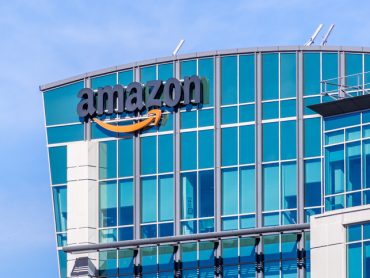Hotel Tech Trends For 2018
Category : Technology
Date : January 19, 2018
And so the inevitable march of technological progress goes on…leaving every hotel management team wondering where to invest their limited amount of reserve funds.
We all know that the future holds many fascinating possibilities about what can be adapted to improve the overall guest experience. The question is what should be acquired and implemented. With this as a guide, I’ve selected the following hospitality technology trends for the coming year not wholly on wow factor but far more so on practicality and ROI.
- Wielding Your CRM. It’s been a long road from simply trying to comprehend what a CRM is to full data terminal integration and leveraging the inferences based from these interconnections. In 2018, those ambitious hoteliers who have fought to amalgamate all their hotels’ various guest profile databases into one unified system will now see the fruits of their labor. With a rich CRM you can drill down to craft highly targeted and overly effective promotional offers. You can also design better onsite programs to capture more ancillary revenue. Above all, knowing guest preferences lets you build a more bespoke experience. I will admit, though, that attaining a unified CRM amongst all of a hotel’s databases is a bit like pulling teeth, but it’s a necessary evil nonetheless.
- Smart TVs Become a Reality. The epitome underlying any technological democratization is the gradual lowering of prices so that the new toys become more accessible to the masses. While smart televisions were fun to demo at past conventions, many of us never really gave them much thought beyond that. Now, however, with sticker shock waning, a bulk order of new in-room wall monitors may be just the ticket for your 2018 upgrade budget. Further, the table name electronic brands like Samsung have built the latest iterations of these devices with greater degrees of compatibility than ever before so that they have significantly less depreciation and more utility over the long-term, especially for when you eventually decide to upgrade to a smart thermostat, digital door signage, bathroom wall displays or any other component that can integrate directly into the television.
- Casting as Expectation. As streaming services like Amazon and Hulu usurp traditional broadcast as the primary medium for television consumption and cord-cutting becomes ever more prevalent across all demographics, having casting technology in the guestroom is likewise moving from a value-add to an expectation. Put another way, if you can’t facilitate a proper connection between guests’ phones and the in-room televisions so they can stream off their own stored profiles, you risk making the overall experience feel dated and mediocre at best. In tandem with the spread of smart TVs, the good news is that there’s also democratization at work here, meaning that this tech is now cheaper and simpler. Not only are casting boxes provided by companies like SONIFI easy to install and use, but televisions are also more amenable to these kinds of software and hardware connections.
- Digital Art. It’s time to think of screens as more than just mediums by which to watch sports or scroll through endless movie options on Netflix. When you consider a public space, screens have the potential to display whatever programs they are instructed to run. While you can start small by playing around with cool new electronic corridor signage that helps to evoke the core of your brand, you can also make quite a splash by recruiting an interior designer to transform a series of parallel monitors into a lattice of locomotive yet eloquent artwork. With OLEDs drastically cutting the energy cost and new screens built specifically for outdoor durability, digital art will soon see wide deployment to increase the allure of hotel lobbies or other public areas. If you’re interested in pursuing something down this road, your first action should be to recruit an art consultant to help you source the people and develop the theme.
- Training Goes Tech. In search of new and creative ways to cut costs, hoteliers are now looking for technology to solve their staffing woes. Building a mobile app for associates to learn the fundamentals of their job responsibilities like what’s offered by HubEngage represents the base level for this, as it can sharply reduce a supervisor’s time spent on job shadowing as well as a manager’s time on one-to-many communication bulletins. Looking beyond mere cost savings, though, harnessing the power of tech for training can heighten team accountability, eliminate legacy issues and boost overall morale which in turn translates to less employee turnover and absenteeism. The pinnacle for this silo is Novility which teaches SOPs as well as corrective exercises through a motion-sensor training station. In short, training hardware and software helps to enrich your team so guest service delivery is never compromised.
- …And Wellness for All. Two population trends are contributing to the rise of wellness programs at hotels such as Hilton’s Five Feet to Fitness or throughout any of IHG’s EVEN properties. First is the overall aging of the Western World, which will inexorably lead to an increased demand for care products, of which tech can play a role in helping to facilitate this demographic’s extended independence. Meanwhile, millennials and the iGeneration have largely been raised under the belief that diet and exercise are essential for one’s health, and these digital natives are always on the lookout for brands that can motivate them in this regard. Whether it’s apps that track their daily movement patterns or interactive tools to stimulate them to fit in a workout whenever its possible, this health consciousness can mean big business for any hotel brand that wishes to capitalize upon it by using tech to help get people moving.




